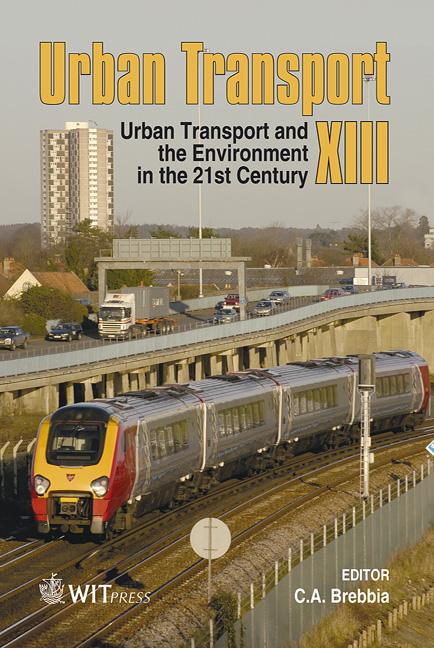Innovative Technologies For Public Transport
Price
Free (open access)
Transaction
Volume
96
Pages
10
Published
2007
Size
562 kb
Paper DOI
10.2495/UT070421
Copyright
WIT Press
Author(s)
G. Pede & A. Agostini
Abstract
Transport systems are to the highest degree responsible for urban air pollution and their efficiency affects our daily lives and productivity. New advanced technologies have been developed in order to balance the negative effects of transport - in terms of air pollution – and to improve mobility in city centres. This paper presents, after a short analysis of those effects, the state of the art of some of these technologies and how they can contribute to reduce such negative effects while improving transport efficiency. Among the innovative technologies presented, the so called ‘Tram-Train’ that offers a direct connection between the city center and the suburbs, eliminating the interchanges between train and public transport system has a specific relevance; the ‘advanced rubber-tyred transport with guided running mode’ is also discussed: this system puts together the positive features of Tram systems, being powered electrically, and the flexibility of buses, having an onboard generator or batteries. Other technologies here included are: BEVs (Battery Electric Vehicles), HEV (Hybrid Electric Vehicles), FCEV (Fuel Cell Electric Vehicles). Also the NGFV (Natural Gas Fuelled Vehicles) can represent a solution for urban air pollution, in particular for lowering PM, CO and VOC emissions. The analysis of such technologies underlines how the problem of urban air pollution can be tackled through the adoption of new technologies for public transport systems. Keywords: innovative public transport systems. 1 Introduction Transport system effectiveness has to be rewarded as a vital feature for economic and social development. Nevertheless transportation activities are responsible of several negative effects on environment and human health with heavy consequences on social and economic aspects (negative externalities). In the following paper we consider the three major transport externalities: air pollution,
Keywords
innovative public transport systems.





